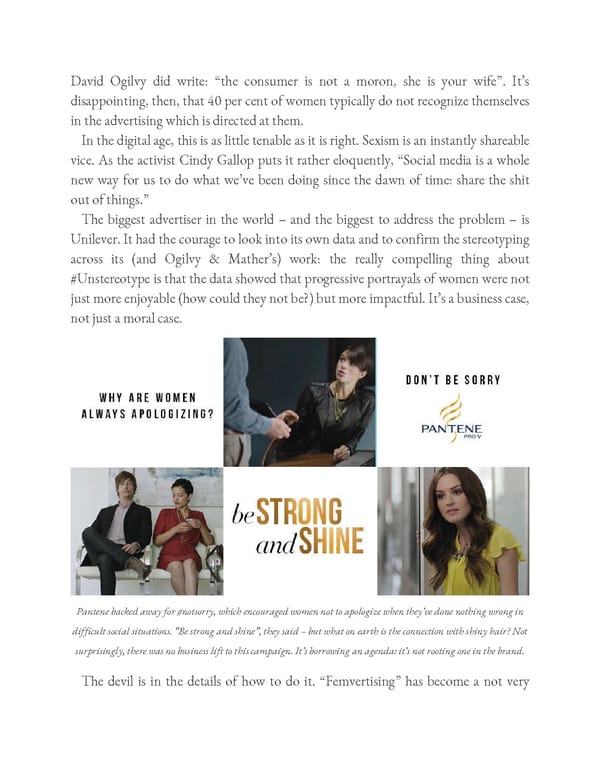David Ogilvy did write: “the consumer is not a moron, she is your wife”. It’s disappointing, then, that 40 per cent of women typically do not recognize themselves in the advertising which is directed at them. In the digital age, this is as little tenable as it is right. Sexism is an instantly shareable vice. As the activist Cindy Gallop puts it rather eloquently, “Social media is a whole new way for us to do what we’ve been doing since the dawn of time: share the shit out of things.” The biggest advertiser in the world – and the biggest to address the problem – is Unilever. It had the courage to look into its own data and to confirm the stereotyping across its (and Ogilvy & Mather’s) work: the really compelling thing about #Unstereotype is that the data showed that progressive portrayals of women were not just more enjoyable (how could they not be?) but more impactful. It’s a business case, not just a moral case. Pantene backed away for #notsorry, which encouraged women not to apologize when they’ve done nothing wrong in difficult social situations. “Be strong and shine”, they said – but what on earth is the connection with shiny hair? Not surprisingly, there was no business lift to this campaign. It’s borrowing an agenda: it’s not rooting one in the brand. The devil is in the details of how to do it. “Femvertising” has become a not very
 Ogilvy on Advertising in the Digital Age Page 120 Page 122
Ogilvy on Advertising in the Digital Age Page 120 Page 122